Understanding and Addressing Anxiety in Autism Spectrum Disorder
Managing anxiety in children with autism is a critical component of improving their quality of life. Due to the unique ways these children experience and express anxiety, tailored approaches are essential. This article explores evidence-based ABA techniques and practical interventions to help children develop emotional regulation and confidence, fostering better social participation and overall well-being.
Recognizing the Signs of Anxiety in Children with Autism
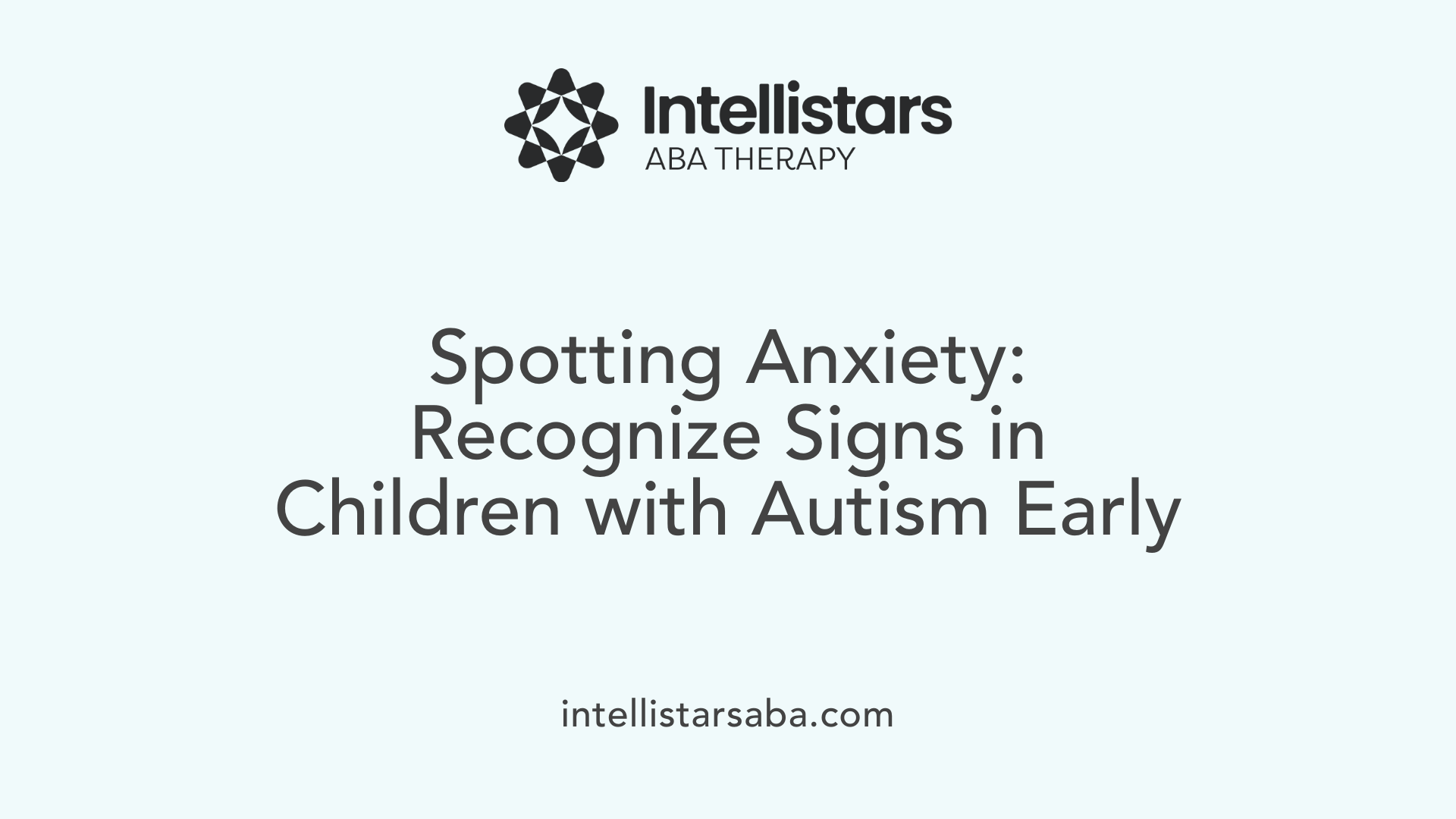
What are the signs of anxiety in children with autism?
Children with autism often display a variety of outward signs that indicate they are experiencing anxiety. These can include physical symptoms such as stomachaches, headaches, sweating, and a racing heartbeat. They might also show behavioral changes like increased irritability, repetitive behaviors, or withdrawal from social activities.
Some children may act out their anxiety through emotional outbursts or meltdowns, while others may become more socially avoidant or exhibit self-injurious behaviors such as head-banging or scratching. Sensory overload is another common sign, where children become overwhelmed by loud noises, bright lights, or chaotic environments.
Recognizing these signs early is crucial for timely intervention. Since some children may struggle to communicate their feelings verbally, paying close attention to these physical and behavioral cues can help caregivers and professionals identify when a child is feeling anxious. Implementing calming strategies, visual supports, and structured routines can significantly ease their distress and promote better social and emotional well-being.
Signs and outward expressions of anxiety include:
- Fidgeting, avoiding eye contact, or sensory overload
- Emotional outbursts and meltdowns
- Increased irritability or repetitive behaviors
- Withdrawal from social interactions
- Self-injurious actions
Physical symptoms associated with anxiety:
| Symptom | Description |
|---|---|
| Stomachaches | Frequent complaints of stomach pain without medical cause |
| Headaches | Persistent headaches linked to stress or anxiety |
| Sweating | Excessive sweating during stressful moments |
| Racing heartbeat | Rapid heart rate during heightened anxiety |
Behavioral indicators:
| Behavior | Explanation |
|---|---|
| Irritability | Easily frustrated or angered reactions |
| Repetitive behaviors | Stereotyped movements like hand-flapping or rocking |
| Social withdrawal | Avoidance of peers or social gatherings |
| Self-injury | Actions like head-banging, scratching, or biting as expressions of distress |
Understanding these signs helps caregivers and educators to intervene early and create supportive environments that reduce anxiety and promote confidence in children with autism.
How ABA Techniques Help Reduce Anxiety Through Tailored Interventions
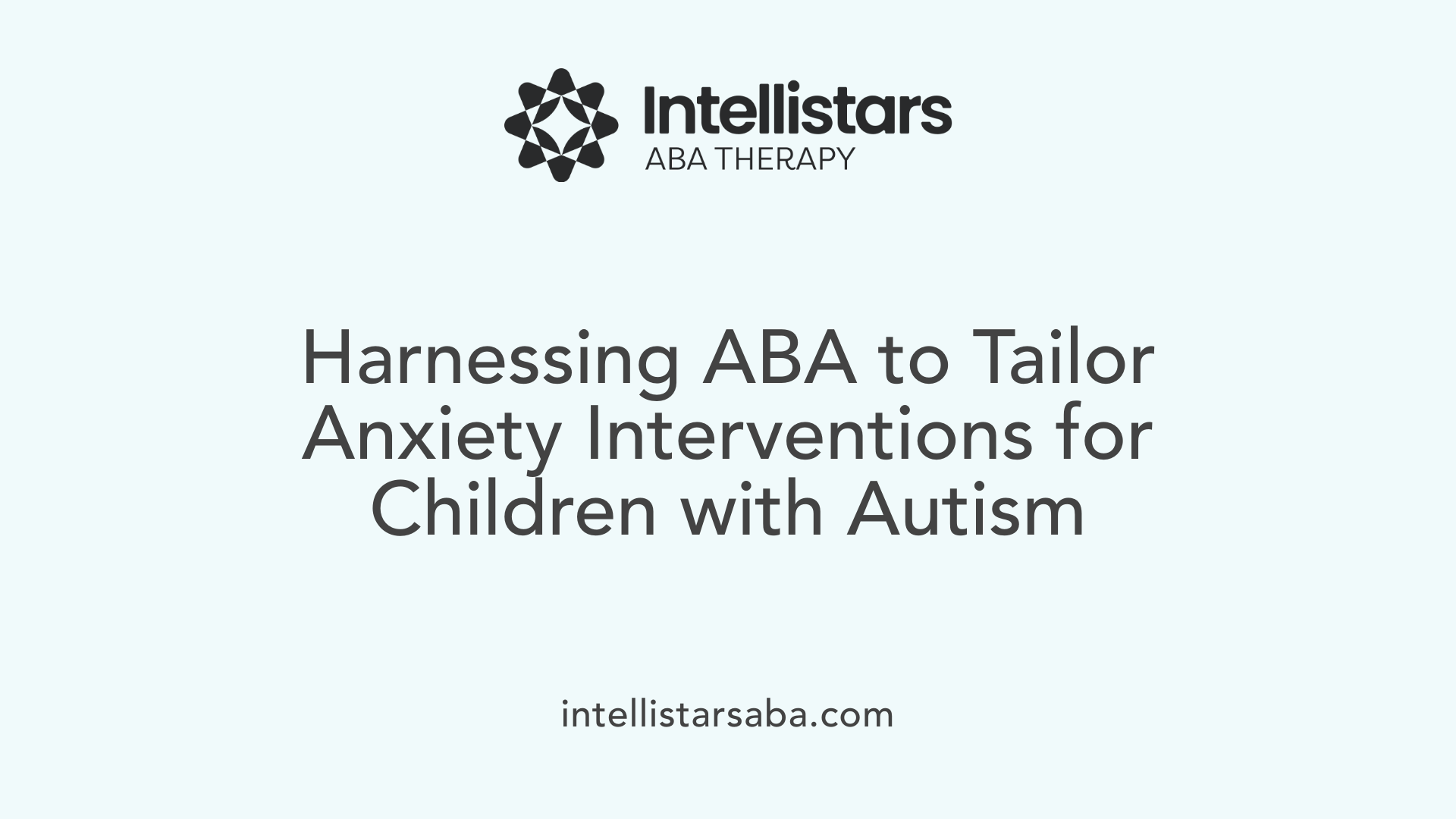
How can ABA techniques help reduce anxiety in children with autism?
Applied Behavior Analysis (ABA) offers practical methods to help children with autism manage their anxiety effectively. Central to ABA is the identification of specific triggers, which therapists determine through careful observation, functional behavior assessments, and caregiver input.
Once triggers are identified, therapists develop personalized strategies such as systematic desensitization and gradual exposure. These techniques gradually introduce children to anxiety-provoking situations in a controlled way, helping them build confidence and tolerate challenging environments.
Using visual supports, like social stories and visual schedules, makes social cues and routines clearer. Establishing consistent routines and visual cues predict upcoming activities, reducing uncertainty and feelings of overwhelm.
Positive reinforcement encourages children to stay calm and respond appropriately, reinforcing behaviors that promote relaxation. Alongside this, skill-building activities enhance independence and emotional regulation—important steps in reducing overall anxiety.
Caregivers also play a critical role. Training them to implement strategies at home ensures that interventions are consistent across different settings. This consistent reinforcement helps children feel more secure and less anxious.
In essence, ABA techniques are highly adaptable, focusing on understanding each child's unique needs to create supportive environments. By systematically addressing triggers and teaching coping skills, ABA significantly helps children with autism reduce anxiety and improve their overall well-being.
**For further reading, searching
Implementing Practical ABA Interventions for Anxiety Management
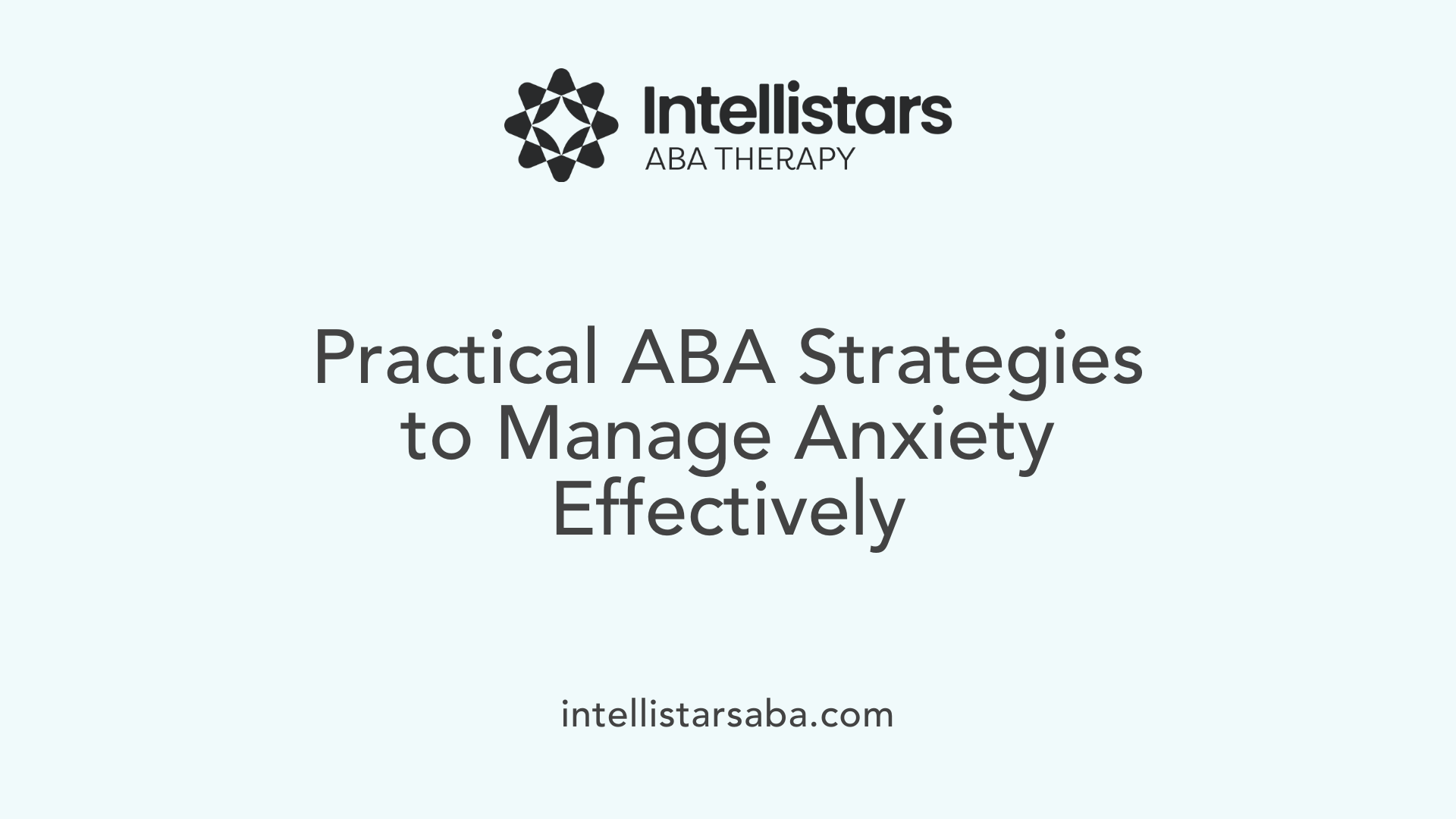
What practical ABA interventions are effective for managing childhood anxiety?
Applied Behavior Analysis (ABA) offers several practical strategies to help children with autism manage anxiety more effectively. One of the most useful techniques is systematic desensitization, which involves gradual exposure to feared situations in a structured manner. By breaking down overwhelming scenarios into manageable steps, children can build confidence and reduce their anxiety over time.
Functional communication training (FCT) is another key intervention. FCT teaches children to express their feelings of discomfort or anxiety using alternative words or signals, decreasing avoidance behaviors such as hiding or aggression. This improved communication reduces misunderstandings and helps children seek comfort or help when needed.
Reinforcing coping skills like relaxation methods, mindfulness exercises, and self-regulation strategies are also vital. Teaching deep breathing, progressive muscle relaxation, or guided imagery equips children to calm themselves during stressful moments.
ABA also emphasizes reducing avoidance behaviors and encouraging adaptive responses. Therapists work to promote engagement, normalize interactions, and reward positive efforts, which supports emotional resilience.
Family involvement is crucial. Training parents and caregivers ensures consistent application of these strategies across different environments. Caregivers learn to implement routine-based interventions, reinforce coping skills, and provide emotional support, creating a stable foundation that enhances overall therapy success.
Together, these tailored ABA practices help children develop the skills needed to cope with anxiety, participate in social activities confidently, and improve their overall well-being.
Personalizing ABA Therapy to Support Anxious Children
How can ABA therapy be tailored for children with autism who are experiencing anxiety?
ABA therapy offers a flexible and individualized approach to help children with autism manage anxiety effectively. By integrating specific strategies, therapists can create treatment plans that address each child's unique challenges and strengths.
One effective method is creating fear hierarchies. This involves identifying anxiety-provoking situations and gradually exposing the child to these fears in a controlled way. Visual supports, such as picture schedules and social stories, are used to prepare the child and clarify expectations, making unfamiliar or intimidating situations feel more manageable.
Involving parents in exposure activities is crucial. Parents work closely with therapists to implement gradual exposure at home and participate in developing a collaborative treatment plan. This consistency helps reinforce learning and builds trust, encouraging repeated practice outside therapy sessions.
Combining elements of exposure-focused CBT (EF-CBT) with ABA strategies enhances treatment outcomes. EF-CBT emphasizes controlled repetitions of feared stimuli, which complement ABA's reinforcement techniques. Together, they promote emotional regulation and reduce avoidance behaviors.
Addressing sensory sensitivities is another vital component. Many children with autism experience heightened reactions to sounds, lights, or textures. Using positive reinforcement for coping skills—like deep breathing or taking breaks—helps promote relaxation and builds resilience.
Finally, tailoring interventions involves ongoing assessment and adjustments, making sure activities are aligned with the child's evolving needs, preferences, and developmental pace. Collaborating with multidisciplinary teams allows for a comprehensive approach that maximizes the child's comfort and confidence.
In sum, personalized ABA therapy effectively reduces anxiety symptoms by systematically confronting fears, respecting sensory sensitivities, and actively involving families in the therapeutic process, paving the way for improved social participation and emotional well-being.
Identifying Triggers and Using Assessment Tools Effectively
Understanding what causes anxiety in children with autism is crucial for tailoring effective interventions. A mix of observation, assessments, and collaboration can help identify specific triggers.
One of the primary methods is observing the child's behaviors and physical responses. Signs like restlessness, trouble sleeping, rapid heartbeat, sweating, or physical agitation often give clues about their anxiety levels.
Functional Behavior Assessments (FBA) are valuable tools. These assessments analyze specific behaviors to determine what environmental or social factors may be triggering anxiety. By understanding the context, caregivers and therapists can develop strategies to reduce these stressors.
Collaboration is also essential. Working closely with parents, teachers, and caregivers provides a full picture, especially since children might not always verbalize their feelings effectively. Their insights often reveal patterns linked to routines, sensory overload, or social interactions.
Using visual supports and self-monitoring tools helps children recognize their own feelings and triggers. Tools such as emotion charts or feeling boards enable children to communicate discomfort before it escalates.
Assessment instruments like the ASC-ASD (Anxiety Scale for Children with Autism Spectrum Disorder) and parent-rated anxiety scales offer standardized ways to evaluate anxiety symptoms. These tools help measure the intensity and frequency of anxiety-related behaviors, providing a clearer picture of triggers that can be addressed through intervention.
In summary, effective identification of triggers involves consulting a combination of observational data, formal assessments, and collaborative input, combined with tools that empower children to express their feelings. Such comprehensive approaches help create targeted strategies to manage anxiety in children with autism.
Supporting Caregivers and Professionals in Anxiety Management
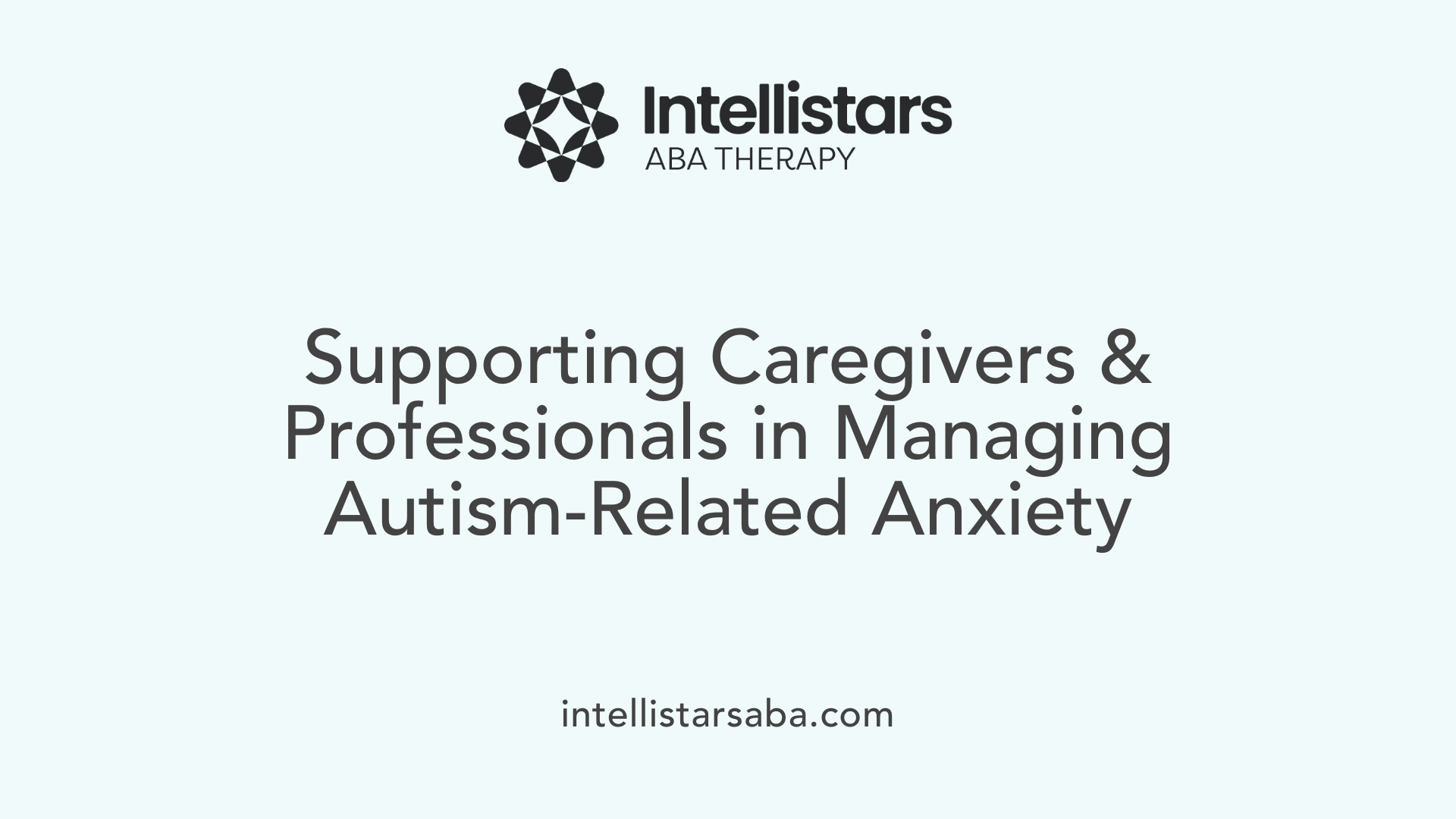
What guidance is available for caregivers and professionals on managing anxiety through ABA?
Managing anxiety in children with autism requires structured support and targeted strategies. Guidance for caregivers and professionals emphasizes the importance of training in behavior management techniques, such as positive reinforcement and systematic desensitization. Creating routine schedules with visual cues and consistency helps reduce uncertainty, making children feel more secure.
Therapists skilled in Applied Behavior Analysis (ABA) work closely with families to develop personalized treatment plans. These plans are tailored to each child's specific anxiety triggers, behaviors, and strengths. Incorporating coping skills like deep breathing exercises, relaxation techniques, and visual supports into daily routines equips children to manage stressful situations more effectively.
Gradual exposure to feared stimuli through controlled, step-by-step approaches is another key component. This method helps children build confidence and tolerance, reducing their overall anxiety.
Professional support plays a pivotal role. ABA therapists provide ongoing assessment and adjust interventions as needed to ensure progress. Collaboration between therapists and caregivers ensures consistency and maximizes the success of treatment.
Furthermore, integrating ABA with other strategies such as cognitive behavioral therapy (CBT) and stress management techniques can offer a comprehensive approach. These combined efforts can significantly improve anxiety symptoms and support emotional well-being.
By utilizing these guidance principles, caregivers and professionals can better support children with autism in overcoming their anxiety, leading to improved social participation and quality of life.
The Benefits and Evidence Supporting ABA for Anxiety Relief
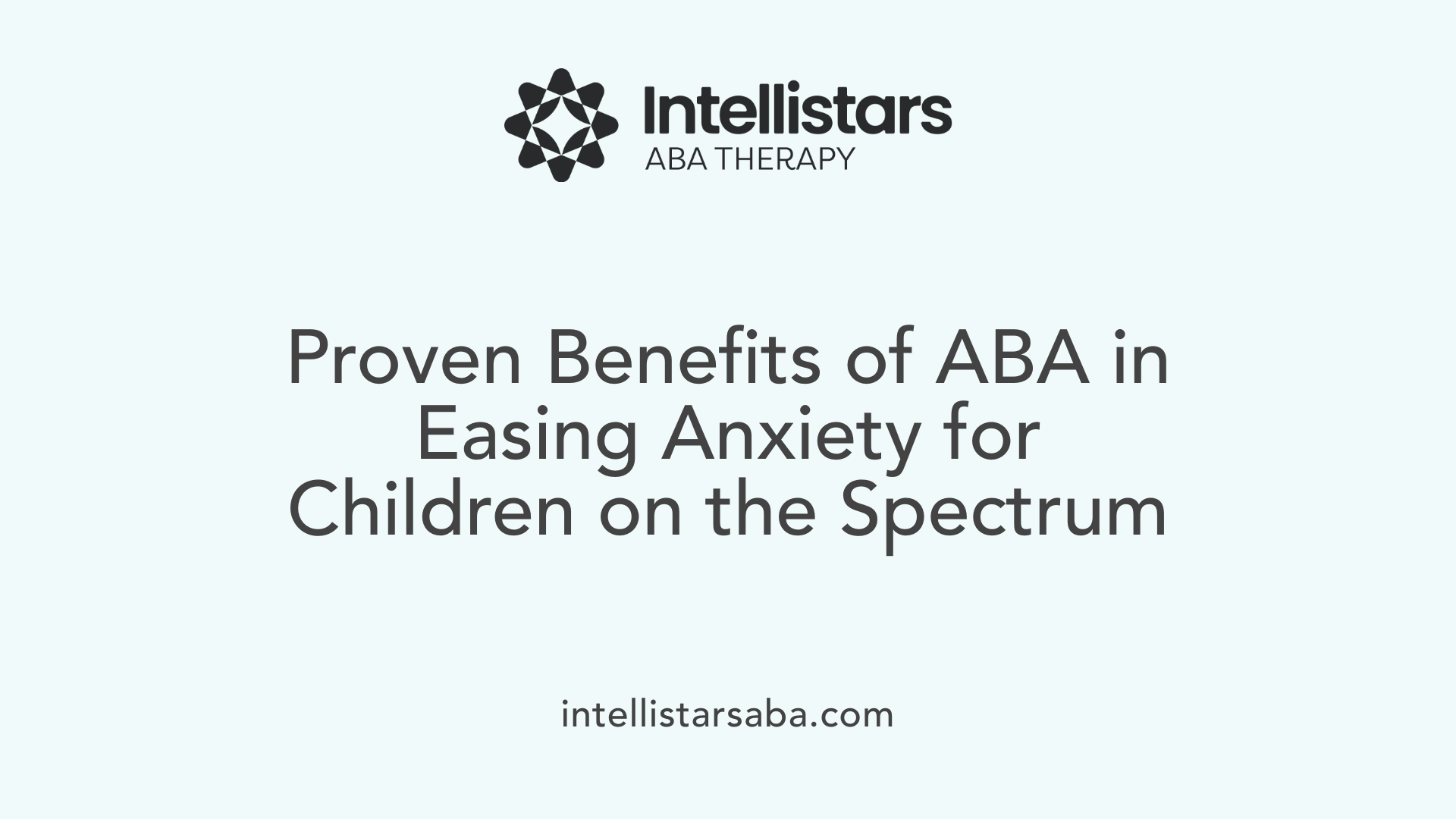
What are the benefits of applying ABA techniques for managing anxiety in children with autism?
Applying ABA techniques for managing anxiety in children with autism offers numerous advantages. ABA helps reduce anxiety symptoms by teaching children coping strategies tailored to their sensory and communication needs. This includes techniques like deep breathing, relaxation exercises, and gradual exposure to feared situations.
Structured routines and visual supports are integral, creating predictable environments that help lessen uncertainty and triggers for anxiety. Visual schedules, social stories, and environmental modifications such as noise reduction and soft lighting contribute to a calming setting.
In addition, ABA emphasizes positive reinforcement, encouraging children to engage in adaptive behaviors and feel more confident. Parental involvement ensures consistent practice across home and therapy settings, reinforcing skills and strategies learned. Over time, these approaches foster emotional regulation, independence, and a greater sense of calm in children with autism.
How does research support ABA's effectiveness in reducing anxiety?
Multiple studies and clinical assessments have demonstrated the positive impact of ABA on children with autism experiencing anxiety. Research published in the Journal of Applied Behavior Analysis observed significant improvements in anxiety symptoms following ABA interventions.
These interventions often include systematic desensitization, modeling, and exposure techniques designed to confront fears gradually. By analyzing behaviors and triggers, therapists can tailor interventions to each child's specific needs.
Additionally, evidence indicates that ABA not only reduces anxiety but also improves social skills, communication, and daily functioning. The structured approach provides measurable progress, allowing adjustments to optimize outcomes.
How does ABA compare with other therapies like CBT?
While ABA focuses on behavior modification through reinforcement and structured interventions, Cognitive Behavioral Therapy (CBT) emphasizes changing thought patterns to influence emotions and behaviors. CBT is effective for many children and adolescents with anxiety but may be less suitable for very young children or those with significant communication challenges.
An integrated approach that combines elements of ABA and CBT can be beneficial, providing both behavioral strategies and cognitive techniques.
Overall, combining these therapies under professional guidance ensures comprehensive support tailored to each child's unique needs.
| Aspect | ABA Therapy | CBT | Importance of Integration |
|---|---|---|---|
| Focus | Behavior modification, skill building | Thought patterns and emotional regulation | Combining both can address complex anxiety symptoms more effectively |
| Suitable Age | Effective across all ages, especially in early childhood | More suitable for older children, adolescents | Ensures comprehensive strategies for different developmental stages |
| Techniques | Reinforcement, modeling, gradual exposure, social stories | Restructuring thoughts, exposure, relaxation techniques | Integration offers a blended approach for best outcomes |
ABA's structured, evidence-based methods, along with personalized plans and caregiver involvement, significantly contribute to reducing anxiety in children with autism, leading to improved well-being and social integration.
Creating a Supportive Environment for Children with Autism and Anxiety
Effective management of anxiety in children with autism using ABA techniques requires a comprehensive, personalized approach. Recognizing the signs early, implementing tailored interventions, and collaborating with caregivers form the foundation of successful outcomes. ABA's focus on skill development, environmental modifications, and positive reinforcement creates a structured, predictable environment that fosters emotional regulation and social confidence. As research continues to affirm the efficacy of ABA, combining it with other evidence-based strategies can further enhance support for children, helping them lead more comfortable, fulfilling lives amidst their developmental challenges.
References
- Addressing Anxiety in Group Settings for Children with Autism
- Effective Strategies for Managing Anxiety in Children with Autism
- How ABA Therapy Helps Reduce Anxiety & Stress for Kids with Autism
- A Parent's Guide to Managing Anxiety in Autistic Children | Childwise
- Applied Behavior Analysis for Reducing Anxiety in Children
- Can ABA Therapy Help with Anxiety?
- Reducing Anxiety in Kids Using ABA Therapy - ABATherapistJobs.com
- Autism and Anxiety: Treatment Options and ABA Techniques






